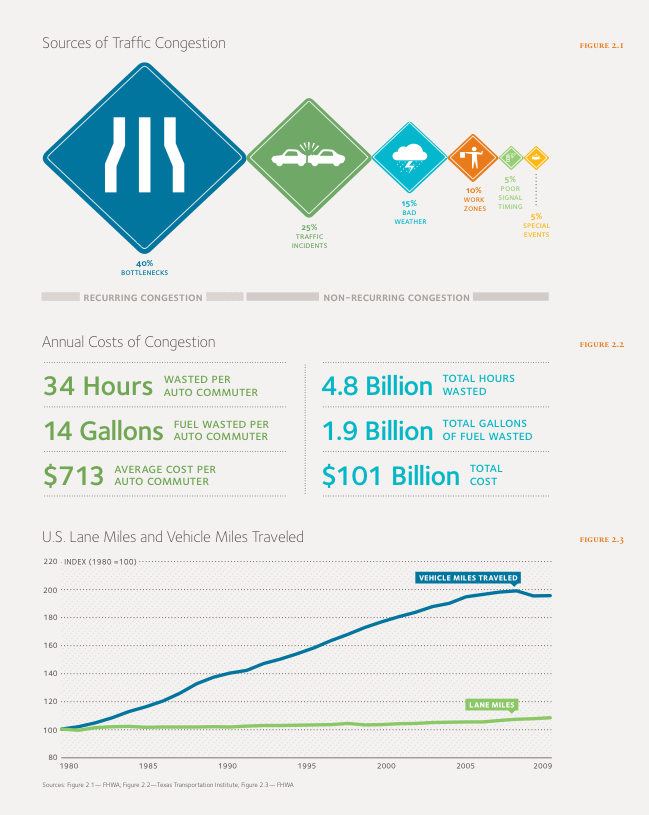SECURING AMERICA’S FUTURE ENERGY
Introduction
In February 2011, the Energy Security Leadership Council released a report entitled Transportation Policies for America’s Future. The report examined the challenges facing the U.S. transportation system in the 21st century and provided a vision and accompanying recommendations for a more efficient, analytically thorough, and market-driven approach to national transportation policy. Most importantly, it emphasized the crucial interaction between transportation policy decisions and the energy security challenge posed by U.S. oil dependence.
Transportation Policymaking, Congestion, and Recommendations for Reauthorization
The United States accounts for more than one-fifth of the world’s daily oil consumption. This heavy dependence on a commodity whose price is both high and volatile imposes a tremendous burden on the U.S. economy. Excessive reliance on oil also constrains the totality of U.S. foreign policy, and encumbers the U.S. military, which stands constantly ready as the protector of vulnerable energy infrastructure and supply routes across the globe.
In 1970, approximately 50 percent of total U.S. oil consumption was attributable to the transportation sector. Then, the sector consumed 8 million barrels of oil per day. Today, the sector is responsible for 70 percent of total U.S. oil consumption—more than 13 million barrels of oil per day.
Notwithstanding recent progress to improve the fuel efficiency of our cars and trucks and efforts to shift towards alternative fuels, the vehicles that power the American economy will remain dependent on oil for many decades. Despite this linkage, transportation and energy policy have historically been debated in two entirely separate spheres. In fact, since the construction of the interstate highway system, a coherent, unified strategy for the federal surface transportation system has largely been absent. Characterized by indirect fees, misaligned incentives, overburdening regulations, and inefficient capital investments, the system currently faces major funding and performance challenges.
Despite covering only a small percentage of total U.S. land, metropolitan areas account for 90 percent of U.S. gross domestic product (GDP), contain more than 80 percent of the nation’s population, and experience two-thirds of total vehicle miles traveled (VMT).
Road traffic congestion today is a significant challenge to transportation system performance in major U.S. cities—and increasingly in smaller cities as well—resulting in wasteful oil consumption and severely threatening the potential future oil-saving benefits associated with more efficient vehicles and alternative fuels. In 2010, drivers in U.S. urban areas were estimated to have wasted 1.9 billion gallons of fuel—equivalent to approximately four entire days of highway petroleum consumption—idling in traffic for 4.8 billion hours. Over the past decade, the total costs of this waste and delay reach almost $1 trillion.
Download full report (PDF): Congestion in America A Growing Challenge to U.S. Energy Security
Securing America’s Future Energy (SAFE)
www.secureenergy.org
“SAFE made its public launch in 2005 with the first presentation of its Oil ShockWave Executive Crisis Simulation. The fast-paced, realistic war games exercise was continually updated and refined through the years, and remains a staple of SAFE’s ongoing education campaign.”







 RSS Feed
RSS Feed